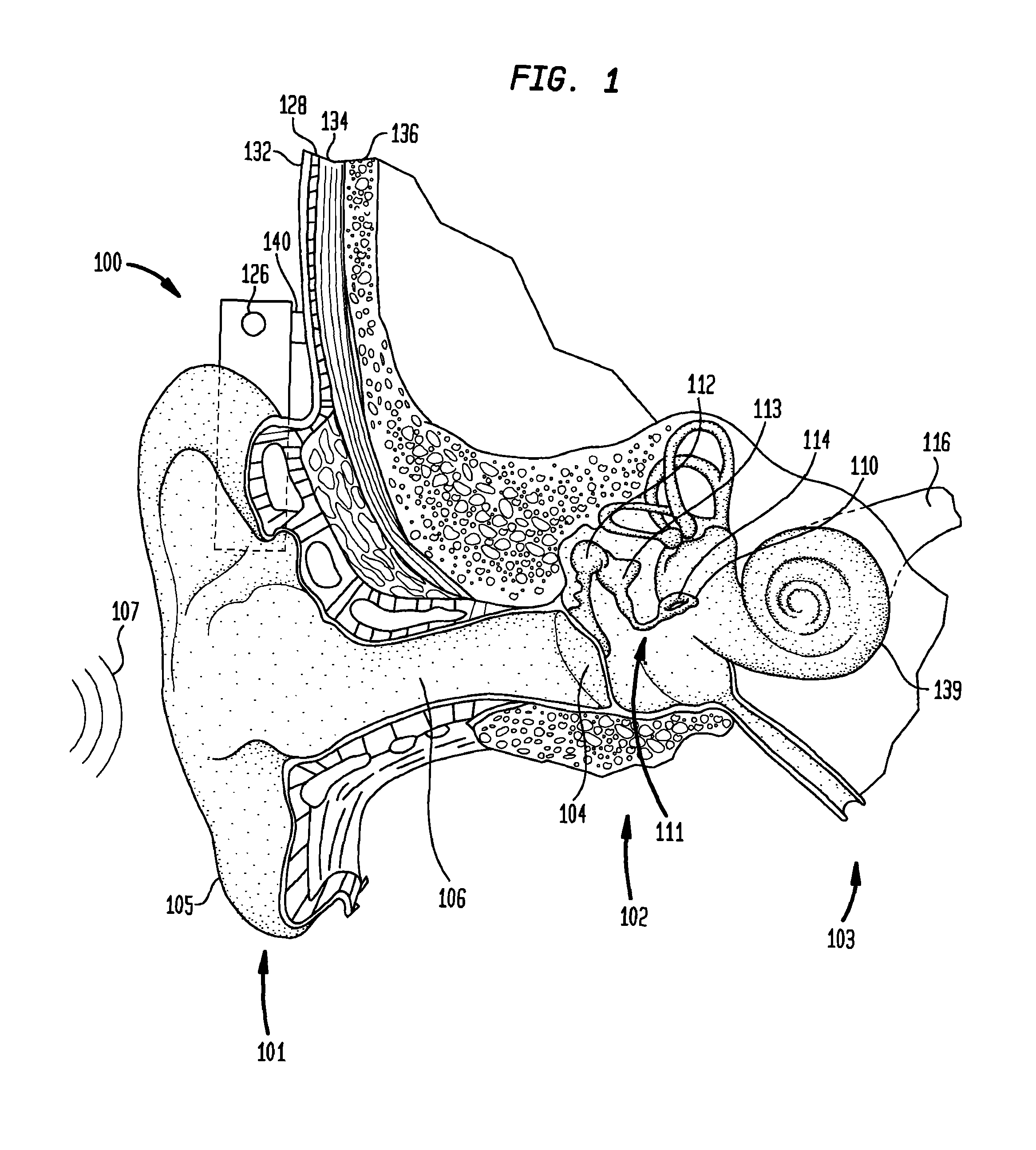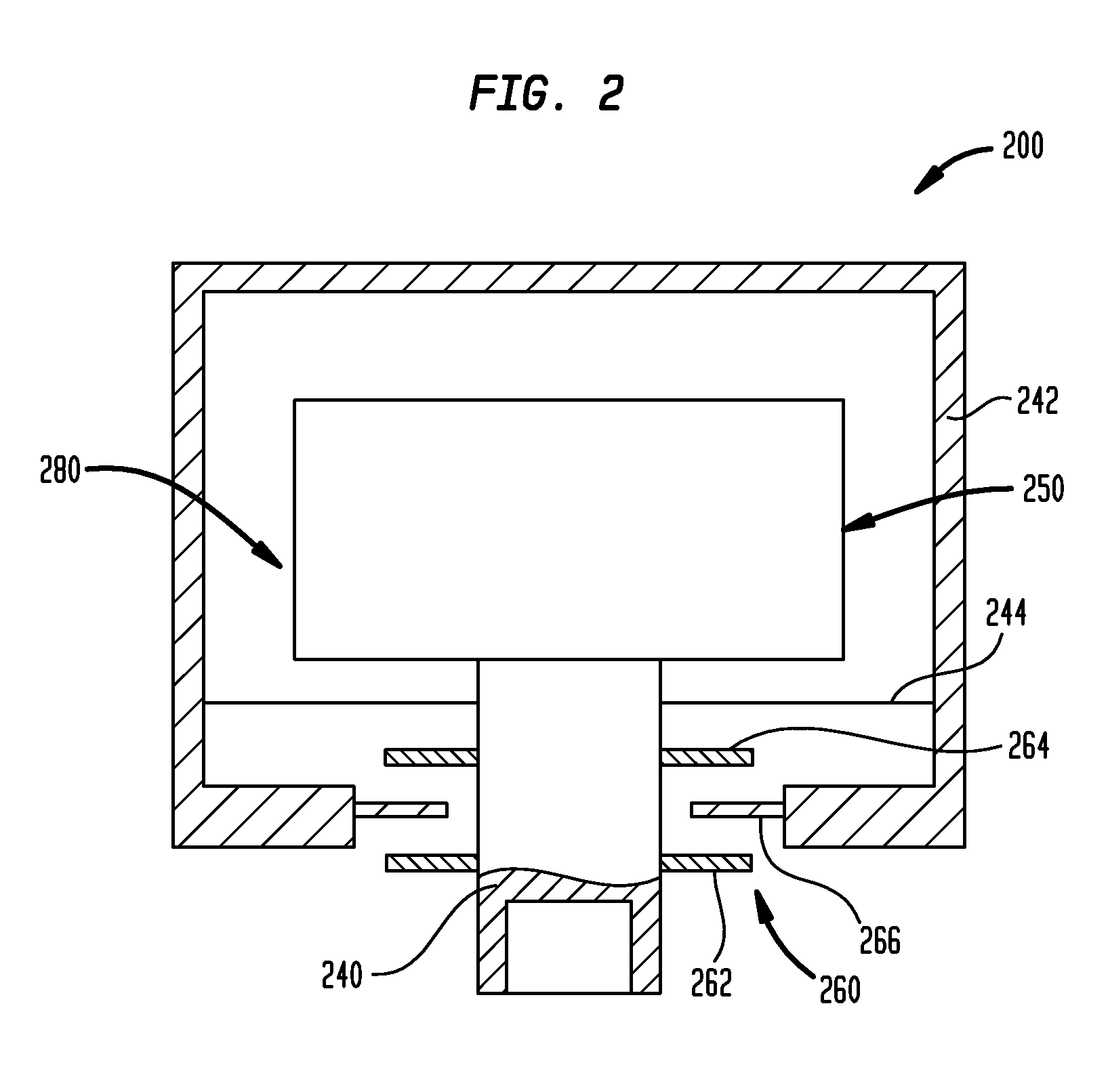Bone conduction device having limited range of travel
limited technology, applied in the direction of transducer casings/cabinets/supports, electrical transducers, electrical apparatus, etc., can solve the problems of conductive hearing loss, impede the normal mechanical pathway that provides sound to hair cells in the cochlea, and not all individuals suffering from conductive hearing loss are able to derive suitable benefits from hearing aids. , to achieve the effect of preventing damage to a bone conduction devi
- Summary
- Abstract
- Description
- Claims
- Application Information
AI Technical Summary
Benefits of technology
Problems solved by technology
Method used
Image
Examples
Embodiment Construction
[0021]Aspects of the present invention are generally directed to a bone conduction device in which the range of travel of device components is limited to reduce the likelihood of damage to the device. In an exemplary embodiment, the bone conduction device comprises a housing, a vibrating actuator, a coupling apparatus and a travel limit apparatus. The coupling apparatus is removably attached to an anchor system implanted in the recipient. The actuator is suspended in the housing and attached to the coupling apparatus to facilitate the transfer of vibrations to the recipient's skull. When the device is attached / detached to / from the anchor system, the travel limit apparatus limits movement of the housing relative to the coupling apparatus and the vibrating actuator preventing the actuator from contacting the housing.
[0022]FIG. 7 is a schematic diagram of a bone conduction device including a travel limit apparatus, in accordance with an embodiment of the invention;
[0023]FIG. 1 is a per...
PUM
 Login to View More
Login to View More Abstract
Description
Claims
Application Information
 Login to View More
Login to View More - R&D
- Intellectual Property
- Life Sciences
- Materials
- Tech Scout
- Unparalleled Data Quality
- Higher Quality Content
- 60% Fewer Hallucinations
Browse by: Latest US Patents, China's latest patents, Technical Efficacy Thesaurus, Application Domain, Technology Topic, Popular Technical Reports.
© 2025 PatSnap. All rights reserved.Legal|Privacy policy|Modern Slavery Act Transparency Statement|Sitemap|About US| Contact US: help@patsnap.com



